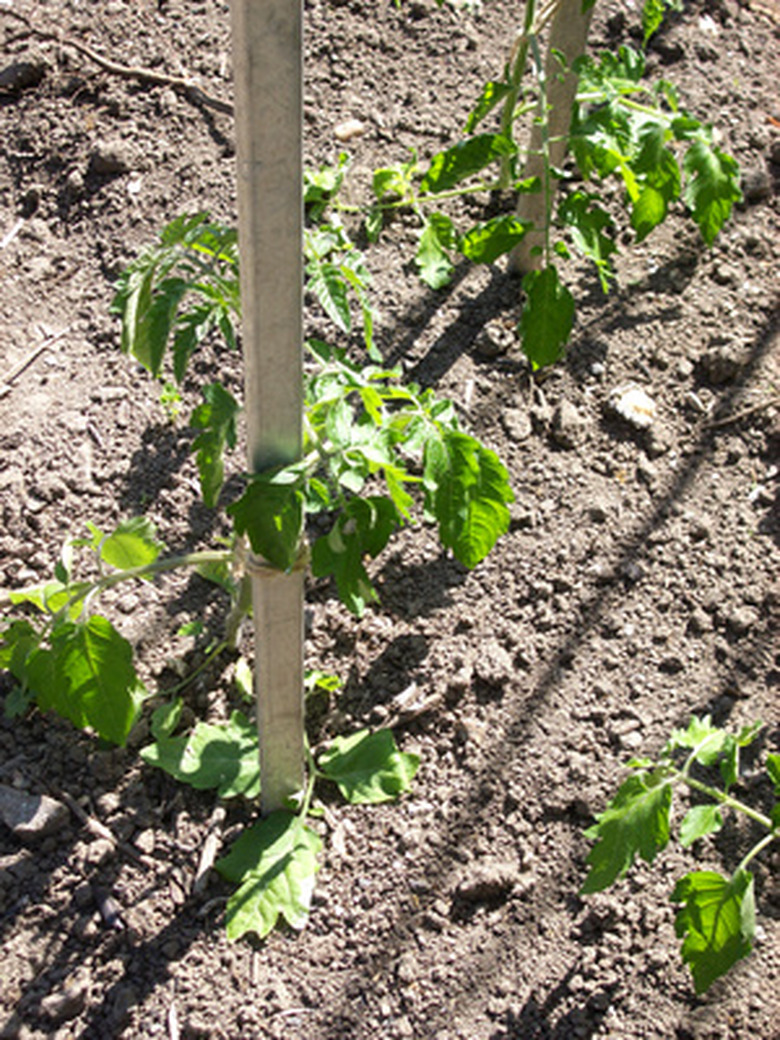How To Control Rust On Bean Plants
The fungus Uromyces phaseoli var typica, more commonly called rust, begins by tiny whitish pustules bumps that form on the underside of bean leaves. Soon, the pustules develop into distinct, round, reddish-brown spots. If not controlled, bean rust will turn your bean leaves yellow and your plant will die. The bean rust spores will travel from plant to plant, contaminating your entire bean crop. Rust is most commonly found on your bean plants when temperatures are between 50 to 77 degrees F, and dew moisture is present. Finding bean rust fungus on your bean plant early and starting treatment can stop the spread and save your bean plants.
Early Elimination
Step 1
Inspect the underside of your bean plant leaves every few days. This is especially important when the weather is cool and the morning dew is heavy. These conditions are ideal for the rust spores to attach and grow on your bean plant leaves.
- The fungus Uromyces phaseoli var typica, more commonly called rust, begins by tiny whitish pustules bumps that form on the underside of bean leaves.
- These conditions are ideal for the rust spores to attach and grow on your bean plant leaves.
Step 2
Remove any leaves on your bean plant that have the whitish or rust colored pustules on them. Pick up any leaves that have fallen and are on the ground.
Step 3
Place the infected, removed leaves in a plastic bag and dispose of the bag with your leaves into your trash bin. Never add the rust-infected leaves into your compost or anywhere it can reinfect a plant. The spores of rust live in the soil around your plants, and when the conditions, such as temperature and moisture, are right, the spores become active.
Heavier Infection
Step 1
Mix a fungicide, with the active ingredient chlorothalonil, in your garden sprayer. Follow the manufacturer's directions on the label
- Remove any leaves on your bean plant that have the whitish or rust colored pustules on them.
- Never add the rust-infected leaves into your compost or anywhere it can reinfect a plant.
Step 2
Spray thoroughly and evenly every bean plant, including, and most importantly, the underside of the leaves.
Step 3
Repeat the application of fungicide on your bean plants every five to seven days. When daytime temperatures begin to remain at 82 degrees F and higher, check your bean plants for new rust. Generally, rust cannot grow, or develop, if temperatures are above 82 degrees F. If you do not find new rust grow on your bean plants, you can decrease in frequency or discontinue your fungicide spraying.
Step 4
Remove all of your bean plants at the end of the growing season. Do not till the plants into the soil as this may infect your soil. To help eliminate rust fungus on your plants next year, rotate your bean plant planting to a different area in your garden.
- Spray thoroughly and evenly every bean plant, including, and most importantly, the underside of the leaves.
- Generally, rust cannot grow, or develop, if temperatures are above 82 degrees F. If you do not find new rust grow on your bean plants, you can decrease in frequency or discontinue your fungicide spraying.
Things Needed
- Garden clippers
- Plastic bag
- Garden sprayer
- Fungicide with active ingredient chlorothalonil
